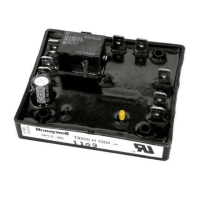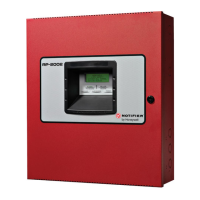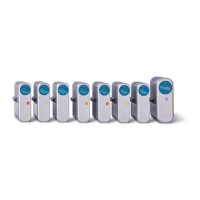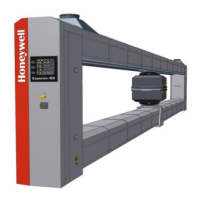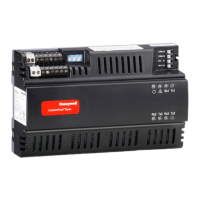4. c. (9) Autothrottle Mode F1ow
Figure 270 shows a schematic of control laws for the four basic
modes of autothrottle operation.
(a) Takeoff/Go-Around Mode
When the autothrottle is operating in either takeoff or
go-around mode, the throttles are independently adjusted to
capture the commanded
EPR.
The control achieves this EPR level
by commanding a throttle rate proportional to the EPR error.
The increased bandwidth requirement during takeoff (the
commanded thrust must be attained prior to throttle-hold) calls
for a high loop gain.
This could result in thrust overshooting
the command if additional compensation were not applied. The
compensation used to preclude overshoots is in the form of
command biases which are proportional to EPR rate and throttle
rate.
(b) F1ight Level Change (FLCH) Mode
In flight level change (FLCH) mode, the throttles are
controlled to maintain a commanded EPR.
During FLCH climb, the
EPR command is determined from the selected engine rating and
the magnitude of the requested altitude change. For large
climbs, the full-thrust rating is commanded, while smaller
altitude changes result in an EPR command which is proportional
to the size of the climb increment.
During FLCH descents, a
minimum thrust level is commanded. When FLCH mode is
initiated, the FLCH EPR command processor smoothly adjusts EPR
command to the appropriate level. This gradual change in
commanded thrust minimizes the effect on autopilot speed
control. The required EPR is maintained by commanding a
throttle rate which is proportional to the EPR error. Unlike
takeoff operation, additional compensation is not required due
to the lower loop gain in FLCH. The requirement for a smooth
transient during FLCH allows for a decreased bandwidth.
(c) Speed Hold Mode
In
speed hold mode, the control modulates the throttles to
maintain the commanded airspeed.
The airspeed target input to the autothrottle is first
evaluated by the speed command processor.
The speed command
processor ensures that maximum airspeeds are not violated
(flap, gear, and
v~~MMo 1imits). Also, a second-order filter
with rate limiting is applied to speed target changes to
support the design goal of smooth throttle movements.
22-14-00
Page 298.203/298.204
Aug 15/91
Use or disclosure of infOrrrIatiOn on this page is subject to the restrictions on the title page of this document.

